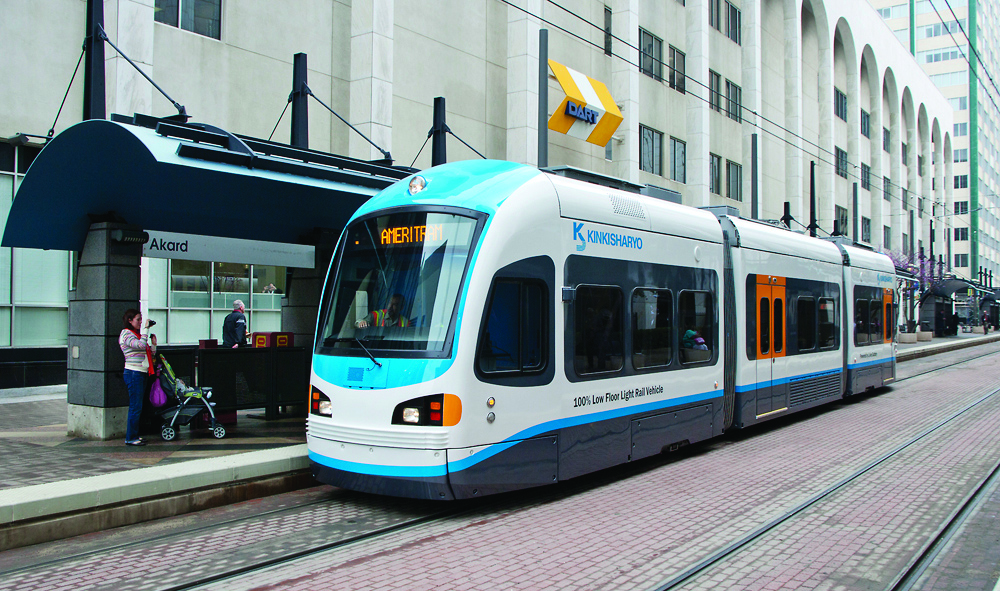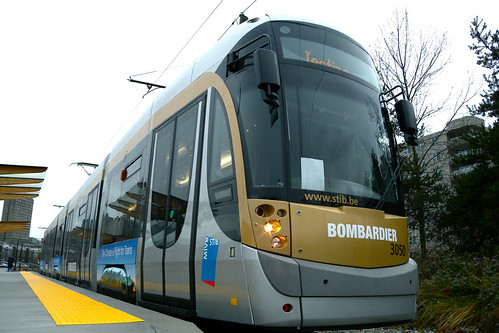Forget about it on the heavy rail lines, because Blue/Orange/Red cars are so identical under the hood that the dimensional differences make almost nil difference to the vehicle cost. They have exactly the same components, right down to the ability for an Orange or Red car to take an overhead power source if pantographs were installed and for any of the cars to adjust to different platform heights by calibrating the under-floor air ballast (when you get that random car that doesn't quite align with the platform...that's a leaking or mis-calibrated air ballast). The aluminum or stainless steel shell that goes on top is the least expensive part of the car, and the basic design is so similar to HRT systems around the world that there's almost no substantive differences between a Red Line car and a NYC Subway BMT division car, or between an Orange Line car and a PATH car.
The only reason for modding the heavy rail tunnels would be if 2 or more of the lines were connected together and interoperable. Which they're not. And there's no obvious way to make them interoperate on a service pattern that serves any pressing need, given the way they all intersect. So set this aside as a non-issue.
-------------------
On Green, the ruling curve radius is Park St. loop at 42 ft. Next-worst is Lechmere inner loop @ 45 ft. (and going away in a few years due to GLX). Boylston curve is a relatively spacious 81 ft., loose enough to take a Blue Line car if need be (albeit veerrrry slowly) and not quite as bad as Bowdoin loop since it's just a turn and not a complete loop. Kenmore and GC loops are much wider still and within the design standards for heavy rail. Not sure what Heath inner loop is, but it's considerably wider than both inner and outer Lechmere.
That is well within the design standards of nearly all generic streetcar-width LRV's like the Kinki-Sharyo
AmeriTram, which can take a 60 ft. curve. Park St. is the only one that would have to be retired for that, but (before it ended up costing too much) they had planned to do that anyway by converting the inner track into a thru track. Generic widebody LRV's like the
Bombardier Flexity and
Alstom Citadis (which don't fit here because of the width and are mostly preferred by newer and/or grade-separated systems), can still do 82 ft....only 1 ft. wider than Boylston despite the widebody. And I'm pretty sure both Alstom and Bombardier have the narrower streetcar-dimension variants in their lineups because both form factors are used ubiquitously worldwide.
Other than dog-slow speeds on a generic, Boylston curve isn't a problem. It doesn't even get close enough to the design limits to put any stress on the articulation.
The ruling height on the GL is in the C/D portal tunnel from Kenmore where it passes the NStar substation on Beacon St. There's heavy under-street trunkline cables coming out of that building (which pre-dates the tunnel), so the tunnel ceiling dips. I don't know what the exact height is, but that is the one that causes all the problems.
Our LRV's are under-height vs. the generics. 12 ft. from wheel to minimum pantograph height. Whereas an AmeriTram is 12.5 ft. on the carbody alone (don't know if that goes down to wheelbase) without factoring minimum pantograph clearance. That's why all the roof-mount transformers and A/C units on the Type 7's and Type 8's are exposed to the elements instead of encased like the sexier-looking generics...they did that to pare a couple inches. The ceiling height inside is a bit lower, and that meant with the Type 8's they had to play "how low can you go" with dropping the floor and push the design limits. It forces a lot of overcustomization.
I don't know if there are any other height restrictions. I don't think so because Haymarket-Pleasant St. handled Orange Line-dimension cars from 1901-09, the Boylston St. subway, B portal, and Kenmore Loop are fine for Blue dimensions, and the 1963-construction eastbound GC tunnel and 1995-2004 construction North Station tunnel are built to Red dimensions. So the C/D pinch should be the only such restriction preventing generics.
The T's also got its own weird specs limiting car design. We of course have left-handed doors. Most systems don't. That affects seating arrangements and under-car component placement somewhat. Although the generics are usually built to allow lefty doors if a buyer wants 'em.
And the T is really anal about car length. Must be able to fit 3 full cars into all subway stations and the inner Heath loop without any non-door part of the train overhanging, must be able to fit 2 cars into the shortest and shittiest strips of asphalt on the B with no non-door part of the train overhanging. And must be able to open all doors on 4 cars in a subway station with some non-door overhang in case a 2-car train has to push a 2-car train. It's not enough to have a super-long 2-car set instead of triplets...it's gotta be 72 feet long on the button. Smallest make of the AmeriTram is 6-1/4 ft. short. Kinki would have to customize, because
it's gotta be 72 fucking feet. Why? "Because we've always done it that way." They even rejected Kinki's offer of modifying the Type 7's with a low-floor "sandwich" section in the middle, because that made them longer than 72 fucking feet. Breda would not have had to compromise on such an unproven design if the Type 8's didn't have to be 72 fucking feet. Just like the Type 9's must be...72 fucking feet.
So...what to do about this?
-- Height restriction can be taken care of by shaving the floor of the C/D tunnel under the substation. This is under bedrock as it climbs the Beacon St. hill and there's nothing underneath, so that shouldn't be an issue. Obviously needs an engineering assessment, but there are no obvious blockers nor should this cost more than $1-3M since a floor undercut has no impact on the structural integrity of the tunnel.
-- Boylston curve should probably be widened a few feet by shaving back the triangular section of wall on the outbound side (reinforcing with rebar as necessary), adding on a couple feet's width onto the steel deck that carries the tracks, and repositioning the tracks. While it's safely within design limits for any generic LRV, that speed restriction is already painful and doesn't need to get worse. $4-8M, engineering assessment of course required but that wall doesn't carry any load except the sidewalk above the ceiling girders so this one is pretty straightforward.
-- Park loop has to be retired. They were funded by stimulus grant for $12M to do just this starting this year, but found out it required more invasive relocation of support girders and electrical boxes so they canceled the project and gave back the fed money (yes...they gave back free money). It's not impossible...just cost more than they wanted. $20M? Somebody at the T has an exact quote, and they wouldn't have gotten the grant to begin with if the engineering assessment hadn't passed, so this is doable.
-- Drop the @#$% 72 ft. length requirement. Not enough generics hit that right on the button for +/- 6 ft. to be such a fatal hang-up. If the AmeriTram 300 is a little shorter...who cares. The cost of NOT modifying them lets you buy more vehicles. Drop the requirement that all trains must fit on the platforms, and make it a saner all
DOORS must fit policy. They have already conceded this requirement for future 4-car subway trains, and it is completely useless on the surface where there's no emergency egress considerations. And why should the crappiest non-ADA asphalt strips on the surface branches be limiter here? FIX 'EM!
-- Strongly consider not just a few feet's variance from the 72 ft. standard, but study vehicles like the super-long versions of the AmeriTram that they can modularly string together with extra unpowered low-floor sections. Is two longer 2-car trains better than running 72 ft. triplets everywhere? Why don't we revisit that low-floor "sandwich" section Kinki offered to add to the Type 7's and settle on that as a new standard length. That's probably pretty close to the 98.5 ft. of the AmeriTram 500...the midrange-length generic.
-- Hook an electro-shock collar to every T upper manager and procurement person. Triggered to the words "We've always done it this way" or any variation of "The Green Line is a century old and has very special needs." Because they have never been able to substantiate either claim with evidence when it comes to vehicle procurement.
Let's say cost on these construction projects bloats. $50M. $75M. $100M How much is that worth vs. the vehicle premium they pay for their overcustomizations amortized over the 25-year rated life of the vehicles + all the special things they have to do with them in rebuilds for extended life? How much gets chewed up by all the consultants and middlemen who have to supervise this OCD customization? How many fewer bidders do they get because too few manufacturers can pull off their kooky customizations (i.e. the "Breda effect"). How many fewer vehicles do they get to buy per order because of all that extra overhead? They make back their one-time construction costs in a single order...every order...if they do this and stick with generics.
It's insane that they won't. They are not the only agency with "special needs" or an old subway who have found a way to do just fine staying hands-off on design and buying generics. The market for generics is HUGE with all these upstart systems looking for a good unit price. The T is cutting its own nose to spite its face clinging to its supposed "specialness" here. Just wait till these Kinki, Bombardier, Alstom, etc. generics start flying off the shelves to every city in middle America that's opening a new LRT line in the next dozen years. The unit premium they'll continue to be paying is totally inside their own heads.






